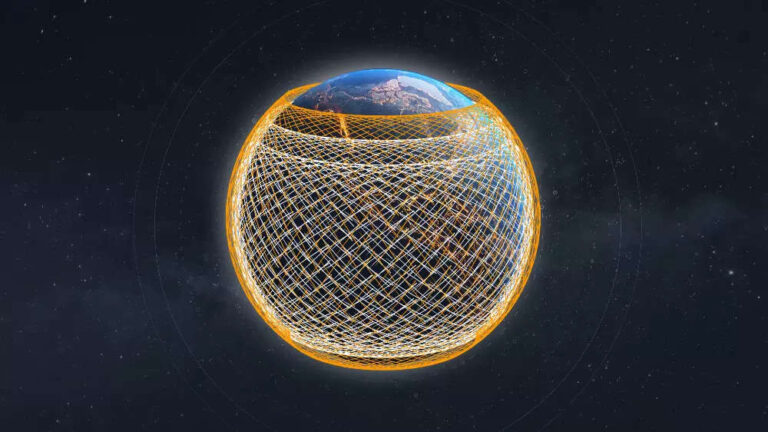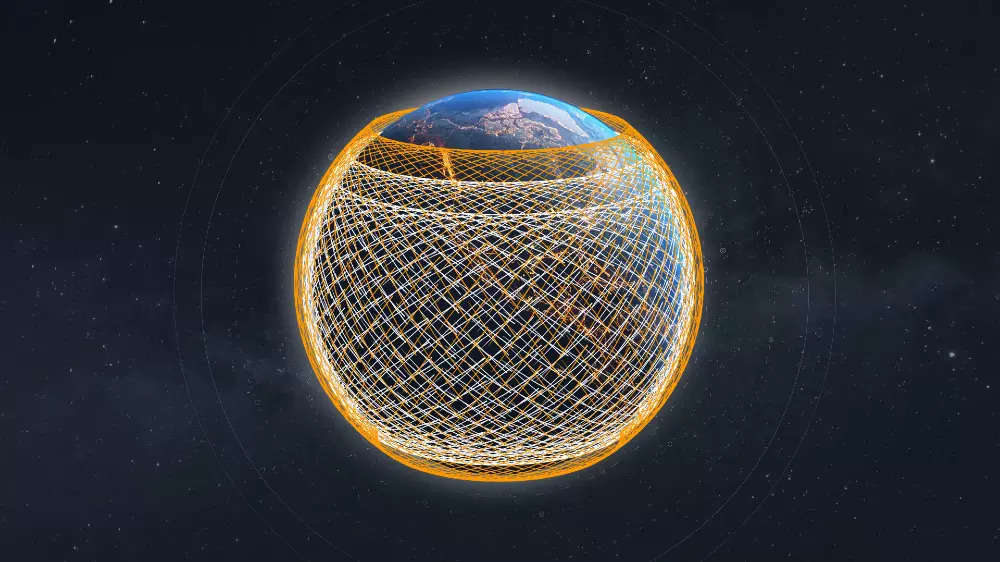
[ad_1]
In October, Amazon launched a pair of two prototype satellites for its Project Kuiper network. The motive was to assess the working of its upcoming constellation of satellites that will provide internet access on places where there are no mobile networks. Last month, the company said that the satellites are operating successfully, and it has now announced that the project has successfully completed tests of optical mesh networks in low Earth orbit.
“Since the successful launch and deployment of two prototype satellites in October 2023, Project Kuiper has been conducting extensive testing of its end-to-end communications payload and network,” the company said.
Amazon has now provided details on ‘one critical system that was part of that testing’ which remained confidential until now — optical inter-satellite link (OISL) capabilities. Here’s an explainer on how the technology will work.
What is Project Kuiper
Before explaining the working of the network, let’s understand what the project is all about. Similar to Elon Musk-owned SpaceX’s Starlink constellation that beams internet from low orbit, Amazon’s Kuiper will also provide internet at places with no connectivity.
Amazon is building a constellation of 3,236 satellites placed in low Earth orbit to beam broadband internet globally. The company is expected to invest $10 billion into the project in 2019, and will compete with SpaceX’s network which already has some 5,000 satellites.
Tech behind Amazon Kuiper constellation
Amazon’s prototype satellites, KuiperSat-1 and KuiperSat-2, launched in October include advanced optical communications payloads. The tests conducted by the company demonstrated 100Gbps optical links between its prototype satellites. The results ensure that OISLs will be operational on first production satellites, slated for launch in the first half of 2024.
Project Kuiper will include laser links on every satellite in its constellation to form a mesh network in space, explained Rajeev Badyal, Project Kuiper’s vice president of technology.
In a mesh system, for example, in our homes, there is a main Wi-Fi router connected with multiple nodes in different rooms. The system ensures that there are no internet drops and the device stays connected to the internet via the node that offers the fastest internet speed in that particular area.
Kuiper will use the same concept but in low-earth orbit at a height of 250–2000 km from the Earth surface.
“This system is designed fully in-house to optimise for speed, cost and reliability, and the entire architecture has worked flawlessly from the very start,” Badyal added.
What Amazon CEO has to say
Amazon CEO Andy Jassy shared an image on X (formerly Twitter) that suggests what the constellation may look like when all the satellites are in orbit.
“This is a pretty cool picture, but what is it? It shows how our Project Kuiper broadband satellites will use optical links to connect to each other once fully deployed,” he said.
“If you’re familiar with a mesh network, it’s essentially what these links allow us to build in low Earth orbit with our Project Kuiper broadband satellite constellation. Our satellites use lasers to connect to each other so that if one is passing over a place where there is no nearby ground gateway to connect to, it can still deliver connectivity to customers on Earth by linking to nearby satellites,” he added.
Amazon will now send more satellites and recently struck a deal with SpaceX to take them in orbit.
“Since the successful launch and deployment of two prototype satellites in October 2023, Project Kuiper has been conducting extensive testing of its end-to-end communications payload and network,” the company said.
Amazon has now provided details on ‘one critical system that was part of that testing’ which remained confidential until now — optical inter-satellite link (OISL) capabilities. Here’s an explainer on how the technology will work.
What is Project Kuiper
Before explaining the working of the network, let’s understand what the project is all about. Similar to Elon Musk-owned SpaceX’s Starlink constellation that beams internet from low orbit, Amazon’s Kuiper will also provide internet at places with no connectivity.
Amazon is building a constellation of 3,236 satellites placed in low Earth orbit to beam broadband internet globally. The company is expected to invest $10 billion into the project in 2019, and will compete with SpaceX’s network which already has some 5,000 satellites.
Tech behind Amazon Kuiper constellation
Amazon’s prototype satellites, KuiperSat-1 and KuiperSat-2, launched in October include advanced optical communications payloads. The tests conducted by the company demonstrated 100Gbps optical links between its prototype satellites. The results ensure that OISLs will be operational on first production satellites, slated for launch in the first half of 2024.
Project Kuiper will include laser links on every satellite in its constellation to form a mesh network in space, explained Rajeev Badyal, Project Kuiper’s vice president of technology.
In a mesh system, for example, in our homes, there is a main Wi-Fi router connected with multiple nodes in different rooms. The system ensures that there are no internet drops and the device stays connected to the internet via the node that offers the fastest internet speed in that particular area.
Kuiper will use the same concept but in low-earth orbit at a height of 250–2000 km from the Earth surface.
“This system is designed fully in-house to optimise for speed, cost and reliability, and the entire architecture has worked flawlessly from the very start,” Badyal added.
What Amazon CEO has to say
Amazon CEO Andy Jassy shared an image on X (formerly Twitter) that suggests what the constellation may look like when all the satellites are in orbit.
“This is a pretty cool picture, but what is it? It shows how our Project Kuiper broadband satellites will use optical links to connect to each other once fully deployed,” he said.
“If you’re familiar with a mesh network, it’s essentially what these links allow us to build in low Earth orbit with our Project Kuiper broadband satellite constellation. Our satellites use lasers to connect to each other so that if one is passing over a place where there is no nearby ground gateway to connect to, it can still deliver connectivity to customers on Earth by linking to nearby satellites,” he added.
Amazon will now send more satellites and recently struck a deal with SpaceX to take them in orbit.
[ad_2]
Source link
